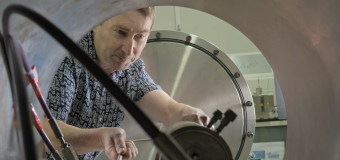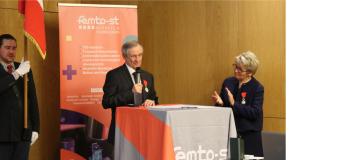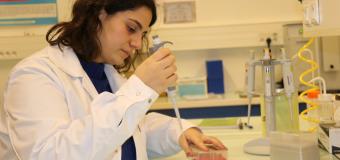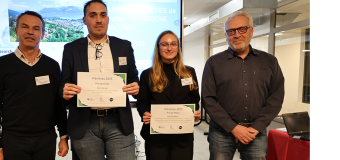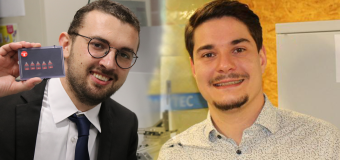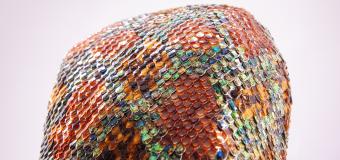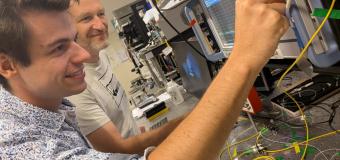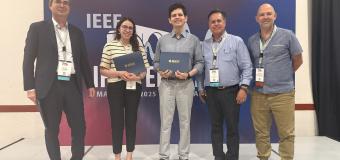Julio Andrés Iglesias Martínez receives the Best Student Award at IEEE Ultrasonic Symposium
His work consists in achieving three-dimensional phononic crystals at the micro-scale with record band-gap width.
The study of periodic artificial structures such as phononic crystals opens up the possibility for engineering effective mechanical and acoustical properties, as well as introducing bandgaps. Ultrasonics offers a wide range of potential applications, such as imaging techniques at frequencies from 1 to 15 MHz, typically. Thanks to additive manufacturing, the fabrication of complex structures such as 3D phononic crystals are now made possible. However, the limited resolution of conventional 3D printers, of the order of a few tens of micrometers, limits their working frequencies well below 1 MHz. That is a reason why three-dimensional phononic crystals operating at frequencies above 1 MHz remain elusive. In this work, we designed, fabricated, and characterized a 3D phononic crystal that has a wide band gap for frequencies extending from 0.6 MHz to 7.5 MHz, which sets a record in the field. The crystal samples are fabricated at the microscale using two-photon lithography, thanks to the facilities of the MIMENTO nanofabrication center of Institute FEMTO-ST.
[[{"fid":"9304","view_mode":"default","fields":{"format":"default","alignment":"","field_file_image_alt_text[und][0][value]":false,"field_file_image_title_text[und][0][value]":false,"external_url":""},"type":"media","field_deltas":{"1":{"format":"default","alignment":"","field_file_image_alt_text[und][0][value]":false,"field_file_image_title_text[und][0][value]":false,"external_url":""}},"attributes":{"class":"media-element file-default","data-delta":"1"}}]]
REFERENCES
[2] J.A. Iglesias Martínez, J. Moughames, G. Ulliac, M. Kadic and V. Laude, Presentation at the IEEE International Ultrasonic Symposium, Best Student Award in the category Physical Acoustics (September 2021).
[1] J.A. Iglesias Martínez, J. Moughames, G. Ulliac, M. Kadic and V. Laude, “Three-dimensional phononic crystal with ultra-wide bandgap at megahertz frequencies,” Applied Physics Letters 118 (6), 063507 (2021).


